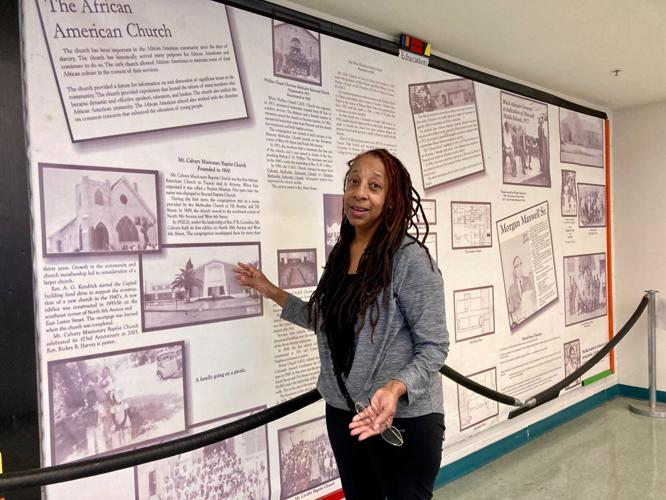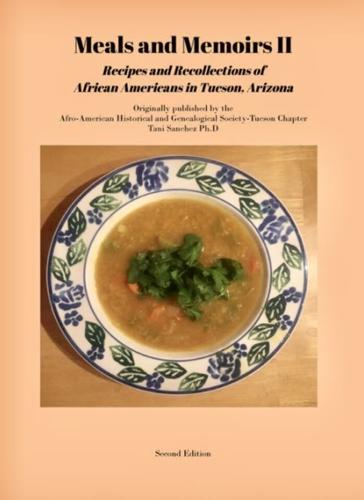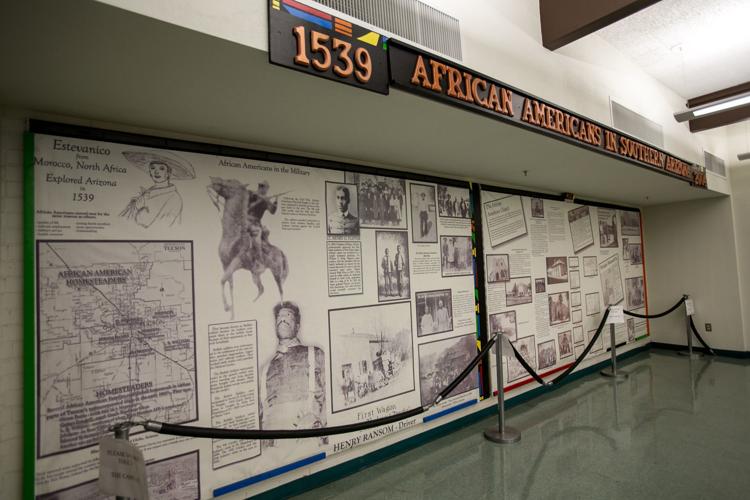Not all of us remember Dunbar School, the all-Black grade school just north of downtown Tucson, but Tani Sanchez does. She grew up two blocks away. Her mom was a teacher there.
We may not know the unique history of the Sugar Hill Neighborhood or the importance of the Prince Chapel African Methodist Church, either, but Sanchez does.
Now a professor of Africana Studies at the University of Arizona, Sanchez has lived here most of her life, and her personal touch can be seen on every page of “Meals and Memoirs II: Recipes and Recollections of African Americans in Tucson.”
Published last year but not readily available until February, M&M II is far more than a cookbook. It is a story book, a history book, an important addition to our understanding of Tucson.
“I guess it’s a combination of all those things,” Sanchez said, “but they’re all tied together by the recipes. Food has always been part of our lives. It’s part of who we are. When Black people get together, they always bring food. And tell stories. So doing it this way just feels natural, right?”
Sanchez’s name is on the cover, but she is quick to say she was the editor and not the author.
Some 60 Tucsonans have contributed short remembrances of their experiences here. There are 85 recipes ranging from “Black-Eyed Peas Creole” to “Leftover Wednesday Chicken” to “Love ‘Em or Leave ‘Em Chitlin Shish Kebobs.”
“Don’t miss the Pound Cake recipe on Page 112,” Sanchez said. “It’s so good it will make you cry.”
M&M II is actually a sequel. Sanchez produced M&M I as a fundraiser for the African American Historical & Genealogical Society of Tucson in 1993.
“We were looking for a fundraiser that might help us pay for some speakers or something, and I remembered a cookbook I had bought when I was in Korea,” she recalled. “I was a broadcast journalist in the Army, and each post had its own section in this book with recipes and stories from the people there.”
When she suggested a cookbook as a possible fundraiser in Tucson, the idea caught on quickly.
“I thought it was something we could do to make money, but it also gave us a chance to talk about people,” she said. “It never was just a cookbook. It was a book about people that had recipes in it.”
Dozens of community members offered recipes. Many more shared personal stories. The book did well, and for the next 25 years, friends would ask when Sanchez planned to update it.
“Four or five years ago, I started wondering if it was time,” she recalls. “When I mentioned it to some people at the university, they thought the book was a great idea. They even connected me to Megan Carney in Regional Food Studies. She helped me get a grant from the Agnese Haury Program to get us started.”
Sanchez’s students did most of the interviews and collected most of the recipes. She herself updated some of the narrative, provided some segues and put things all together. The book was ready for release in 2020 but was delayed by the pandemic.
“Meals and Memoirs II” introduces us to John Greenwood, Helen Wilkins and Marjorie Hudson Robinson. We hear from Debi Chess Mabie, Jamillia Joseph, and Enid Moore-Cranshaw.
We meet Geta LeSeur-Brown, a retired professor from Jamaica who shares her recipe for Jamaican Ackee and Saltfish.
There are recipes from the Deep South and others from the Near South, Mexico.
“To be Black in Tucson often means being multicultural,” Sanchez noted. “There’s no one way of being Black or eating Black. Three recipes were contributed by people who came here from Africa. One of our folks works on the reservation. He had a recipe for frybread.”
The book also provides a look at Tucson’s history. The Sugar Hill Neighborhood was once the vibrant, middle-class hub of Tucson’s Black community. Framed by East Grant Road, East Speedway, North Sixth and North First avenues, a large majority of neighborhood homes were owned by Black people. Friends convened on their front porches. Kids played ball in the streets.
Like Sanchez’s own church, Prince Chapel, Mount Calvary Baptist in Sugar Hill had a large congregation. It was the cultural, educational and social hub for hundreds of families.
Educating us about our own hometown comes naturally to Sanchez, whose grandparents moved to Tucson in the 1920s because of the schools.
“My grandfather worked for a sawmill up in McNary, Arizona,” she explained. “Most of the kids went to one school, but the Black kids went to another, and the Black school stopped with the eighth grade. My grandparents moved to Tucson because the high schools here were integrated, and their children could graduate.”
While true that Tucson’s high schools here were open to all, the city’s grade schools were not. From 1913 to 1951, all Black children went to Dunbar, including Tani’s mom, Marguerite Euell Sanchez. Photos of her can be seen at Dunbar even today.
Marguerite Sanchez later became a teacher, and her daughter did, too. Borrowing upon her experience in broadcasting, Tani Sanchez now focuses on racial representations in media at the UA.
That and writing books.
As for her own skills in the kitchen?
“Let’s just say I’m a person who can follow recipes, so cookbooks work for me,” she laughed. “I do know this: There are some great dishes in this book.”
FOOTNOTES
All local libraries will be closed Monday, May 29, in honor of Memorial Day. They will return to their normal schedules Tuesday.
Until students return in August, the University of Arizona Bookstore will be open from 10 a.m. to 5 p.m. Monday through Friday. Hours on Saturday will be 10 am. to 4 p.m. The store will be closed on Sundays.
Barbara Lewis remembers singer Marian Anderson performing at the school, and a visit from poet, novelist and playwright Langston Hughes.







